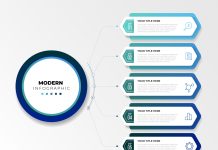Understanding your customers’ needs and preferences is crucial for crafting effective strategies. Qualitative research offers invaluable insights into customer behavior and attitudes, which can drive more targeted and successful marketing efforts.
This blog describes how this type of research can help you get to know your B2B customers better and why it is an essential tool for any business aiming to excel.
What is Qualitative Research?
Qualitative research involves collecting non-numerical data to understand concepts, opinions, or experiences. Unlike quantitative research, which focuses on statistical analysis and measurable data, this type of research explores the underlying reasons behind customer behaviors and decisions. Common methods include in-depth interviews, focus groups, and observation.
The Importance of Qualitative Research in B2B
- Uncovering Customer Motivations: Qualitative research allows businesses to delve into the motivations driving their B2B customers. Understanding these motivations helps tailor products, services, and marketing messages that resonate with target audiences.
- Identifying Pain Points: Through direct interactions with customers, qualitative type of research can reveal pain points and challenges that might not be apparent through quantitative data alone. Addressing these issues can improve customer satisfaction and loyalty.
- Gaining Contextual Insights: This type of research provides context around customer needs and behaviors. It helps in understanding the ‘why’ behind customer actions, which is critical for developing more effective business strategies.
Methods of Qualitative Research
- In-Depth Interviews: Conducting one-on-one interviews with key stakeholders or decision-makers can yield detailed insights into their needs, preferences, and challenges.
- Focus Groups: Bringing together a small group of customers for discussion can generate diverse perspectives and reveal common themes and issues.
- Observation: Observing customers in their natural environment or during their interactions with your products can provide valuable insights into their behavior and preferences.
- Case Studies: Analyzing detailed case studies of customer experiences can offer a deeper understanding of how your solutions impact their business.
Implementing Qualitative Research
- Define Objectives: Clearly outline what you aim to achieve with your qualitative research. This could include understanding customer pain points, validating product features, or exploring new market opportunities.
- Choose the Right Method: Select the right type of research method that best aligns with your objectives and target audience. Each method has its strengths, so choose accordingly.
- Engage with Customers: Build rapport with participants to encourage open and honest feedback. Ensure that the research process is as comfortable and non-intrusive as possible.
- Analyze and Interpret Data: Once data is collected, analyze it to identify patterns, themes, and insights. Use these findings to inform your business strategies and decision-making processes.
Best Practices for Qualitative Research
- Be Objective: Approach the research with an open mind and avoid leading questions that might bias the responses.
- Ensure Confidentiality: Respect participants’ privacy and confidentiality to build trust and encourage honest feedback.
- Use Findings Strategically: Apply the insights gained from qualitative type of research to refine your marketing strategies, improve customer experiences, and drive business growth.
Conclusion
This type of research is a powerful tool for gaining a deeper understanding of your B2B customers. By exploring their motivations, pain points, and behaviors, you can tailor your strategies to better meet their needs and achieve greater business success.
Incorporate qualitative type of research into your strategy to stay ahead of the competition and foster stronger customer relationships.
I hope you find the above content helpful. For more such informative content please visit TechEdgeDemand.












